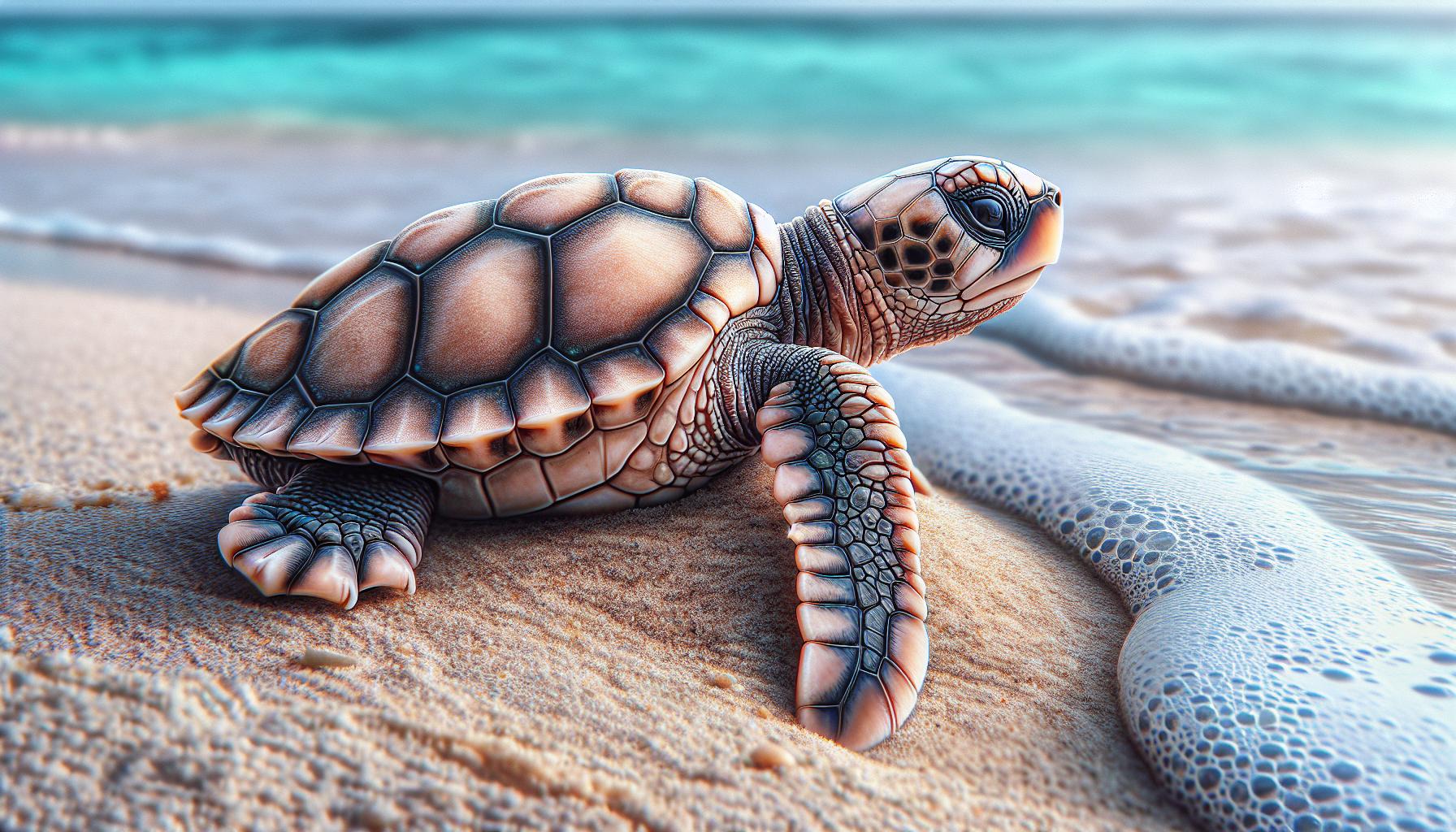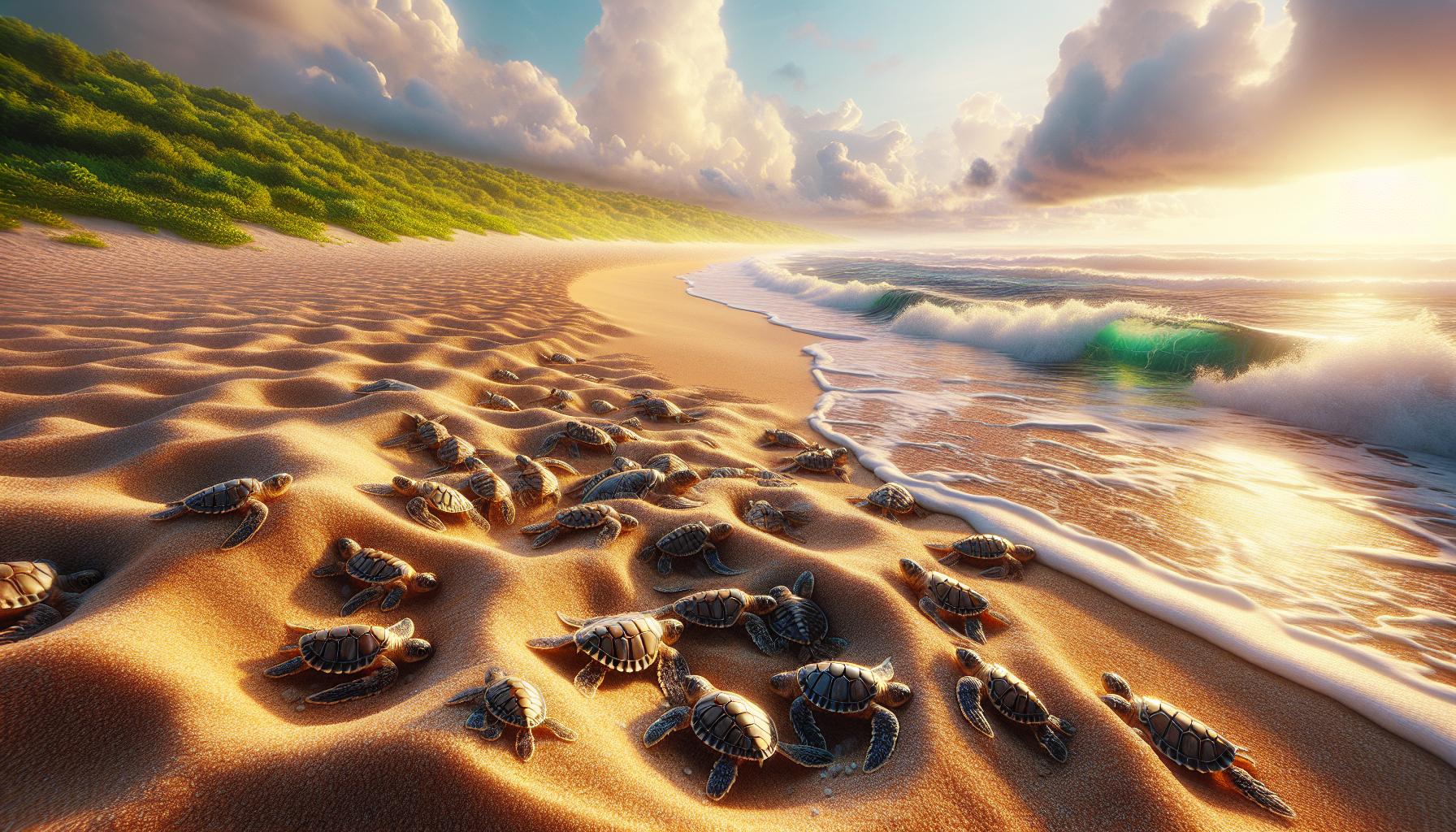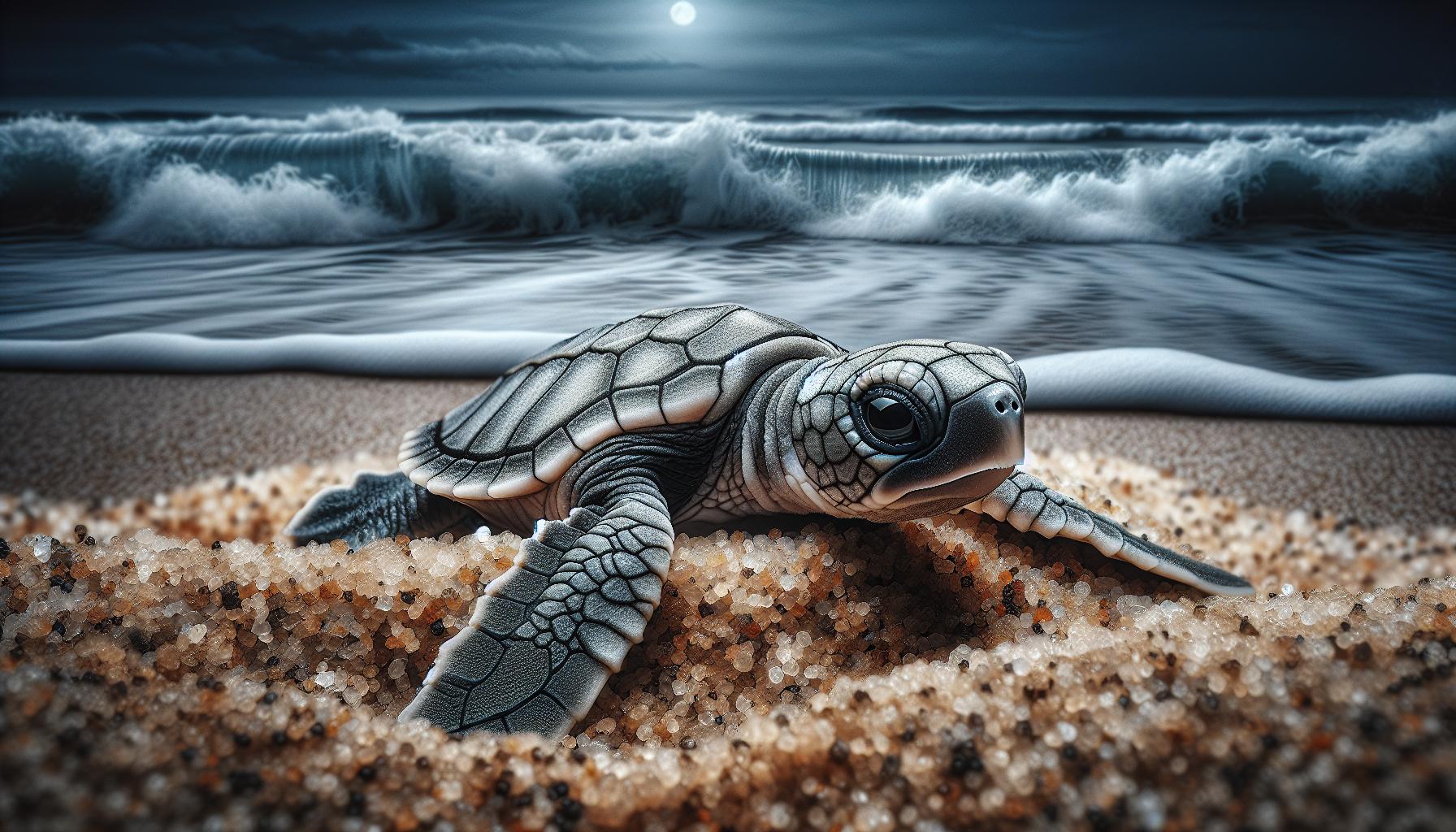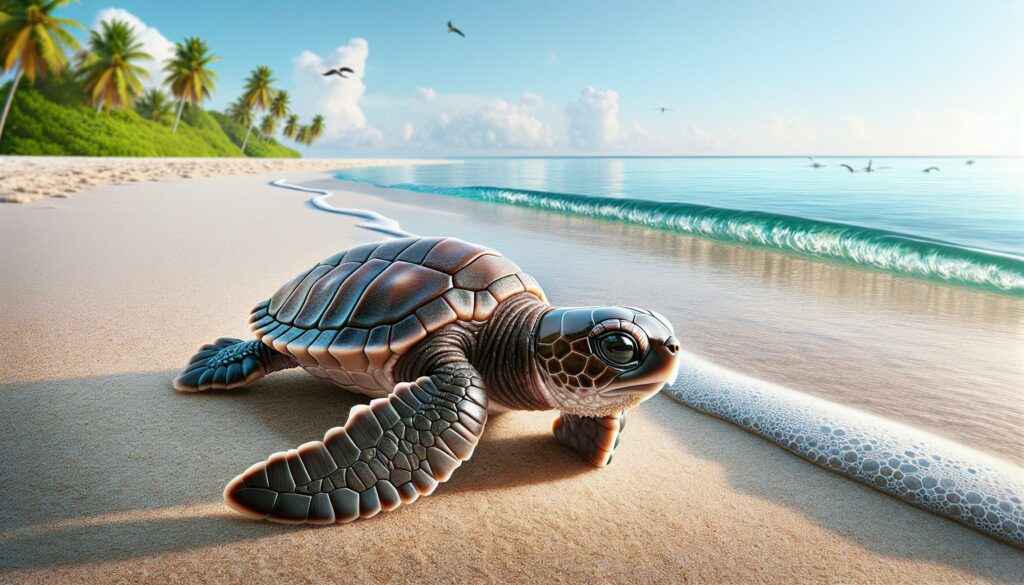When I first laid eyes on the baby turtle, I was captivated by its tiny shell and curious demeanor. These little creatures are not just adorable; they play a crucial role in our ecosystems. Understanding their habits and habitats can deepen our appreciation for nature and help us protect these remarkable beings.
Baby turtles face numerous challenges from predators to environmental changes. As I explore their journey from hatchling to adulthood, I’ll share insights into their behaviors and the vital conservation efforts needed to ensure their survival. Join me as we dive into the fascinating world of baby turtles and discover why they deserve our attention and care.
- Ecological Importance: baby:liwzyxb6aks= turtle play a crucial role in maintaining balanced ecosystems, highlighting the need for their conservation.
- Vulnerabilities: These young turtles face significant threats, including predation, habitat destruction, pollution, and climate change, all of which jeopardize their survival.
- Unique Behaviors: Baby turtles navigate using natural cues like moonlight and exhibit instinctual behaviors that enhance their chances of survival.
- Conservation Efforts: Active initiatives, such as protecting nesting sites, beach clean-ups, and public awareness campaigns, are essential to safeguard their habitats and ensure their future.
- Physical Characteristics: Baby turtles have soft, flexible shells which provide protection, and their unique size and growth rates are influenced by environmental factors.
- Diverse Habitats: They thrive in various coastal and freshwater environments, with their geographic range impacting their availability and population density.
Baby:liwzyxb6aks= Turtle
Baby turtles, often considered one of nature’s most charming creatures, play a crucial role in maintaining balanced ecosystems. Their life begins as hatchlings, emerging from eggs buried in sandy shores. Upon entering the world, they face immediate challenges, such as evading predators like seagulls, crabs, and raccoons.
These young turtles display remarkable instinct, navigating instinctively towards the ocean. This journey, however, isn’t without risks. Environmental changes like rising temperatures and habitat destruction threaten their survival. Pollution, especially plastic waste, severely impacts their health and development.
In addition to these challenges, baby:liwzyxb6aks= turtle exhibit fascinating behaviors. They rely on moonlight and celestial cues for navigation, showcasing their connection to the natural environment. Conservation efforts, such as protected nesting sites and beach clean-ups, are vital in ensuring the survival of these creatures. Effective initiatives involve local communities, governments, and conservation organizations working together to safeguard the habitats essential for baby turtles’ growth and development.
Overall, understanding the plight of baby:liwzyxb6aks= turtle emphasizes the need for ongoing conservation efforts. Protecting these precious beings ensures ecological balance and promotes a healthier planet for future generations.
Physical Characteristics

Baby turtles exhibit unique physical traits that contribute to their charm and survival in their natural habitats. Their size, weight, and shell structure play crucial roles in their development and ability to navigate the challenges they face.
Size and Weight
Baby turtles typically measure around 2 to 4 inches in length at hatching. Their weight varies, usually ranging from 0.5 to 2 ounces. Size fluctuations depend on species, with sea turtle hatchlings generally being larger than freshwater turtle varieties. Growth rates depend significantly on environmental factors, including food availability and habitat quality.
Shell Structure
Baby turtles possess soft, flexible shells known as carapaces, primarily made of bony plates covered by a layer of keratin, similar to human nails. The shell provides essential protection from predators and environmental hazards. As hatchlings grow, their shells harden, becoming more robust. The intricate patterns on their shells, often unique to each individual, serve various purposes, including camouflage against predators.
Habitat and Distribution

Baby turtles thrive in diverse habitats that provide suitable conditions for their survival and growth. Their distribution spans various regions, significantly influenced by environmental factors.
Natural Environment
Baby turtles inhabit coastal areas, estuaries, and freshwater rivers. They prefer sandy beaches for nesting, where female turtles lay eggs. The sand’s warmth aids incubation, promoting healthy development. After hatching, baby turtles instinctively head for the ocean or freshwater sources. The surrounding vegetation and shallow waters offer crucial shelter as they begin their journey. Bay waters and mangrove swamps also serve as vital habitats, providing food sources and refuge from predators.
Geographic Range
Baby turtles’ geographic range encompasses numerous regions worldwide. They are found in tropical and subtropical oceans, particularly along the coasts of the Americas, Africa, and Australia. Within the United States, species like the Loggerhead (Caretta caretta) and Green Turtle (Chelonia mydas) nest primarily on the southeastern coastline. Other species, such as the Leatherback Turtle (Dermochelys coriacea), roam across the Atlantic and Pacific Oceans, inhabiting both temperate and tropical waters. These turtles migrate considerable distances, often traveling thousands of miles between feeding and breeding grounds.
Behavior and Diet

Baby turtles exhibit fascinating behaviors and specific dietary needs essential for their survival. Understanding these aspects of baby turtles helps shed light on their developmental processes and ecological impact.
Feeding Habits
Baby turtles primarily consume a diet rich in marine organisms. Their feeding habits depend on species and habitat. Common food sources include:
- Seaweed: Provides necessary nutrients for herbivorous species.
- Jellyfish: A primary food source for many species due to its high water content.
- Crustaceans: Fostering growth and offering protein for omnivorous species.
- Small Fish: Contributing essential fats and proteins for development.
Newly hatched turtles forage near shorelines and in shallow waters where food is abundant. They often feed opportunistically, ensuring they meet their energy requirements to grow and thrive.
Social Behavior
Social behavior in baby turtles includes limited interactions, primarily driven by survival instincts. Key behavioral traits consist of:
- Nesting Aggregation: Baby turtles nest in groups, promoting greater survival rates through collective defense.
- Navigational Cues: Following light from moon and stars, baby turtles rely on celestial navigation to find their way to the ocean.
- Territoriality: Young turtles may show territorial behaviors, often establishing temporary feeding zones to reduce competition.
While baby turtles are not typically social creatures, their instinctual behaviors enhance their chances of evading predators and successfully navigating their environment. Understanding these behaviors emphasizes the importance of conservation efforts, ensuring healthy ecosystems for future generations.
Conservation Status
Baby turtles face numerous threats that jeopardize their survival at every stage of their life cycle. Various conservation efforts aim to address these challenges and secure their future.
Threats to Survival
Habitat destruction poses a significant risk for baby turtles. Coastal development, such as resorts and housing, reduces suitable nesting sites. Predation from animals like gulls, crabs, and raccoons intensifies, especially during the vulnerable hatchling phase. Pollution, particularly plastic waste, endangers their health, leading to ingestion and entanglement. Climate change causes rising temperatures, impacting nesting success and increasing the vulnerability of baby turtles to environmental stresses. Increased human activity along coastlines further compounds these threats, contributing to the decline in their populations.
Preservation Efforts
Effective preservation efforts focus on protecting nesting sites and reducing environmental impact. Beach clean-ups target debris, especially plastic, that harms marine life. Local communities often participate in initiatives to safeguard nesting areas, creating protected zones for turtles. Public education campaigns raise awareness about the importance of preserving coastal ecosystems and support responsible tourism practices. Additionally, legislation includes regulations for coastal development, ensuring minimal disruption to turtle habitats. Collaborative efforts among governmental bodies, conservation organizations, and volunteers enhance the effectiveness of these preservation initiatives, fostering a safer environment for baby turtles.
Baby turtles are truly remarkable creatures that capture my heart with their charm and resilience. Their journey from hatchling to adulthood is fraught with challenges that demand our attention and action. I believe that by understanding their behaviors and the threats they face, we can make a difference in their survival.
The conservation efforts underway are vital in protecting these adorable animals and their habitats. It’s inspiring to see communities come together to support initiatives that ensure baby turtles have a fighting chance. I’m excited to continue exploring their journey and sharing insights that can help raise awareness about the importance of preserving these incredible creatures for generations to come.

